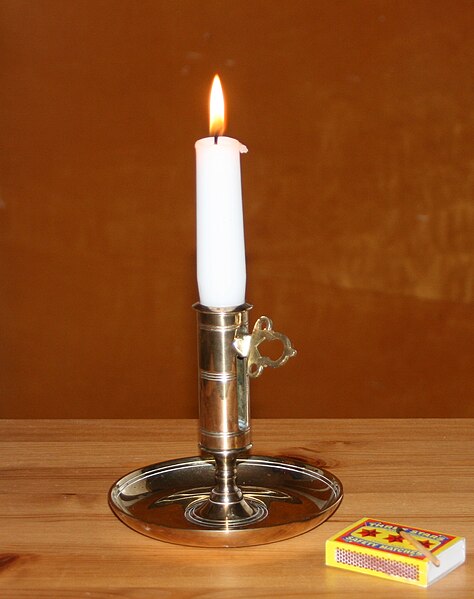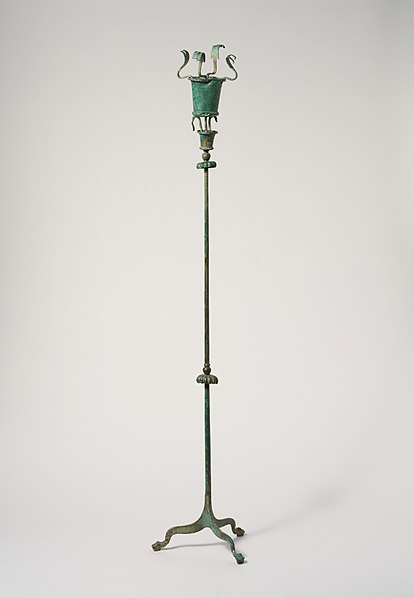A lantern is an often portable source of lighting, typically featuring a protective enclosure for the light source – historically usually a candle, a wick in oil, or a thermoluminescent mesh, and often a battery-powered light in modern times – to make it easier to carry and hang up, and make it more reliable outdoors or in drafty interiors. Lanterns may also be used for signaling, as torches, or as general light-sources outdoors.
A railroad brakeman's signal lantern, fueled by kerosene.
Arabic style lanterns (fanous), symbolic in the Islamic month of Ramadan
15th-century candle lantern from Germany, perforated metal
Street lanterns in Algeciras, Andalusia, Spain
A candle is an ignitable wick embedded in wax, or another flammable solid substance such as tallow, that provides light, and in some cases, a fragrance. A candle can also provide heat or a method of keeping time. Candles have been used for over two millennia around the world, and were a significant form of indoor lighting until the invention of other types of light sources. Although electric light has largely made candle use nonessential for illumination, candles are still commonly used for functional, symbolic and aesthetic purposes and in specific cultural and religious settings.
A candle in a candle stick
Taper candles in a church
A small ornamental candle with a gold stand
Etruscan candelabrum c. 550 B.C








